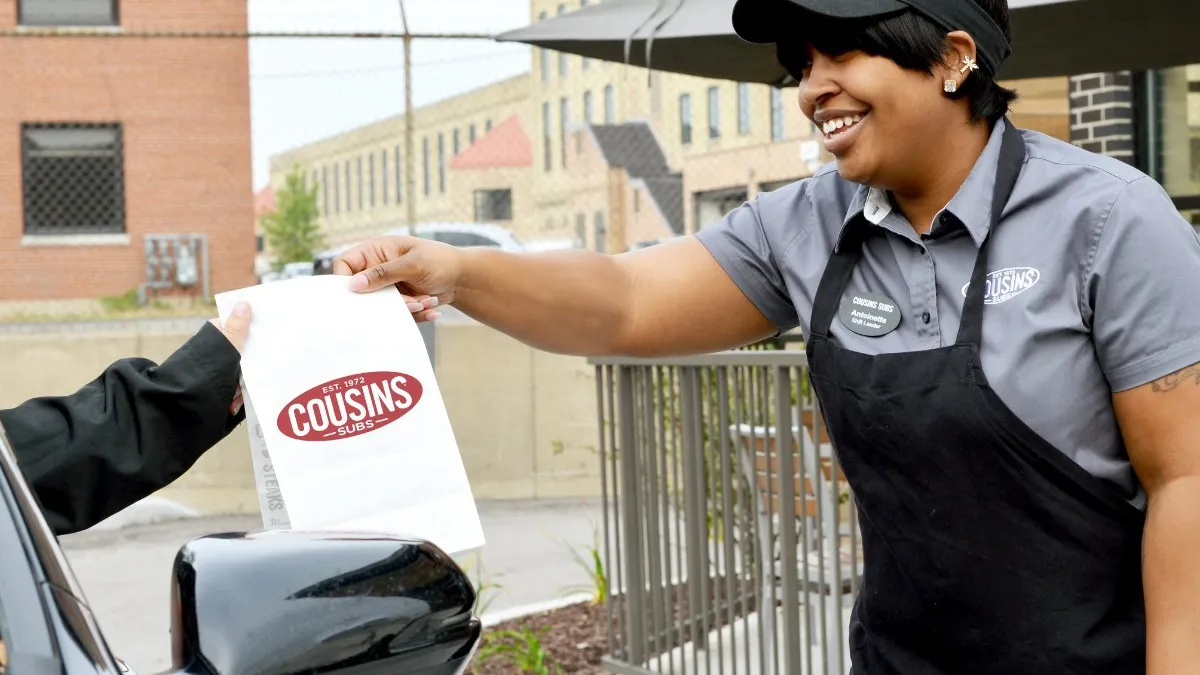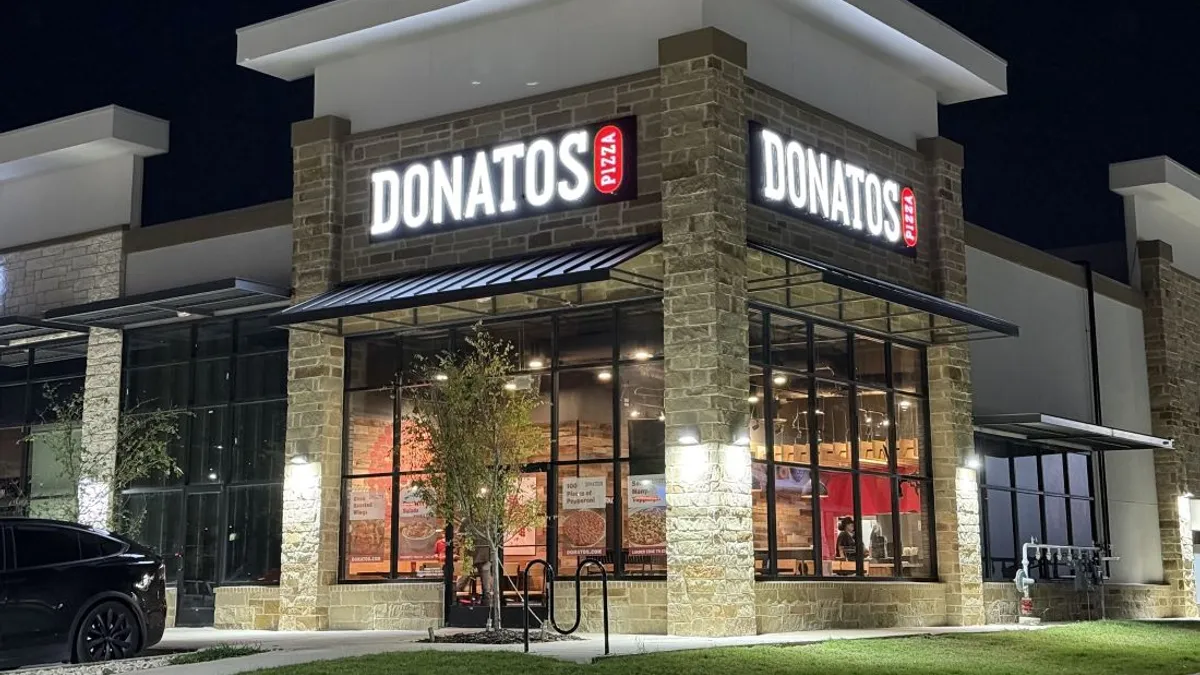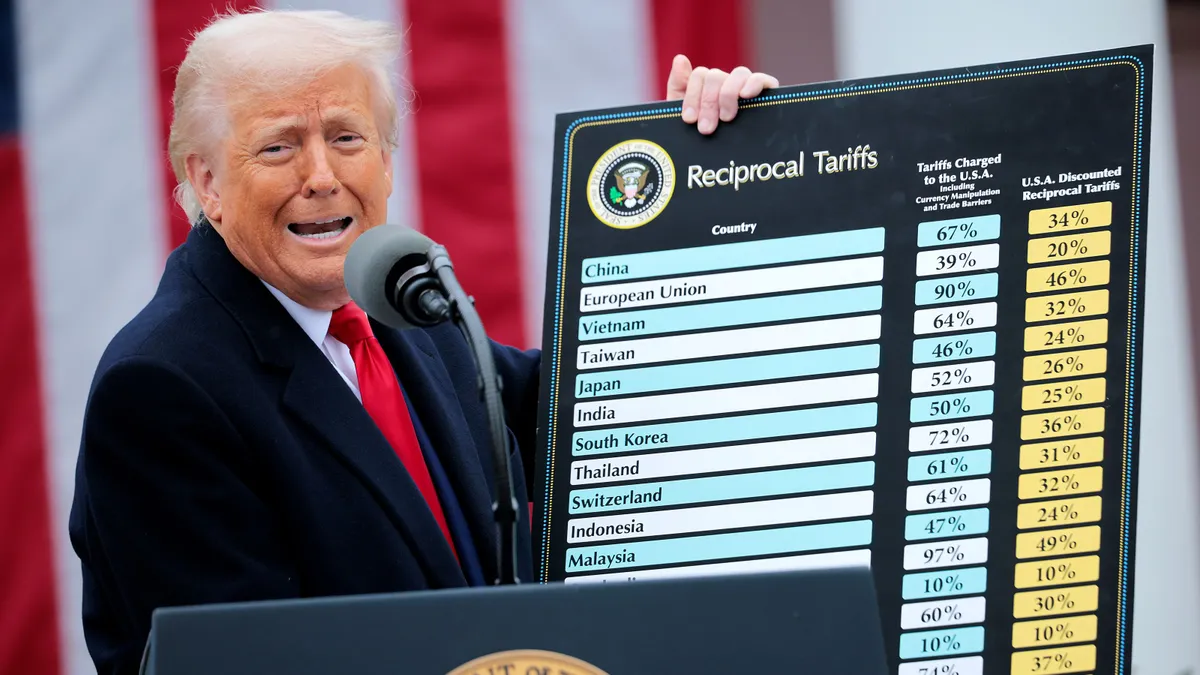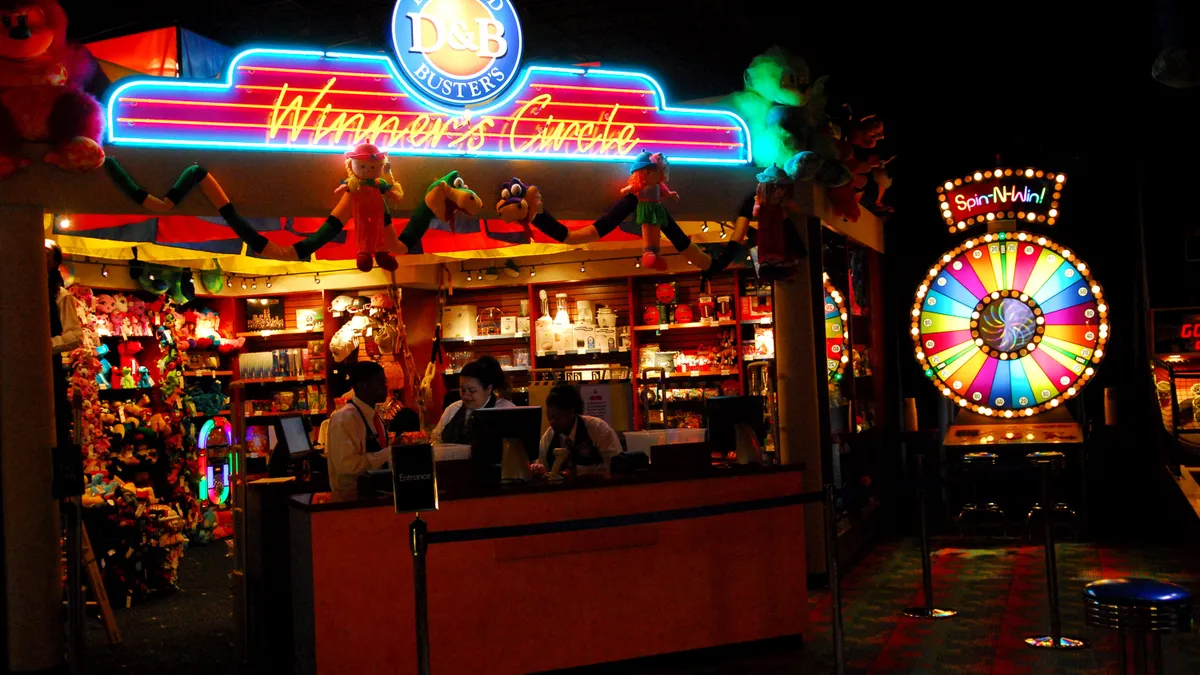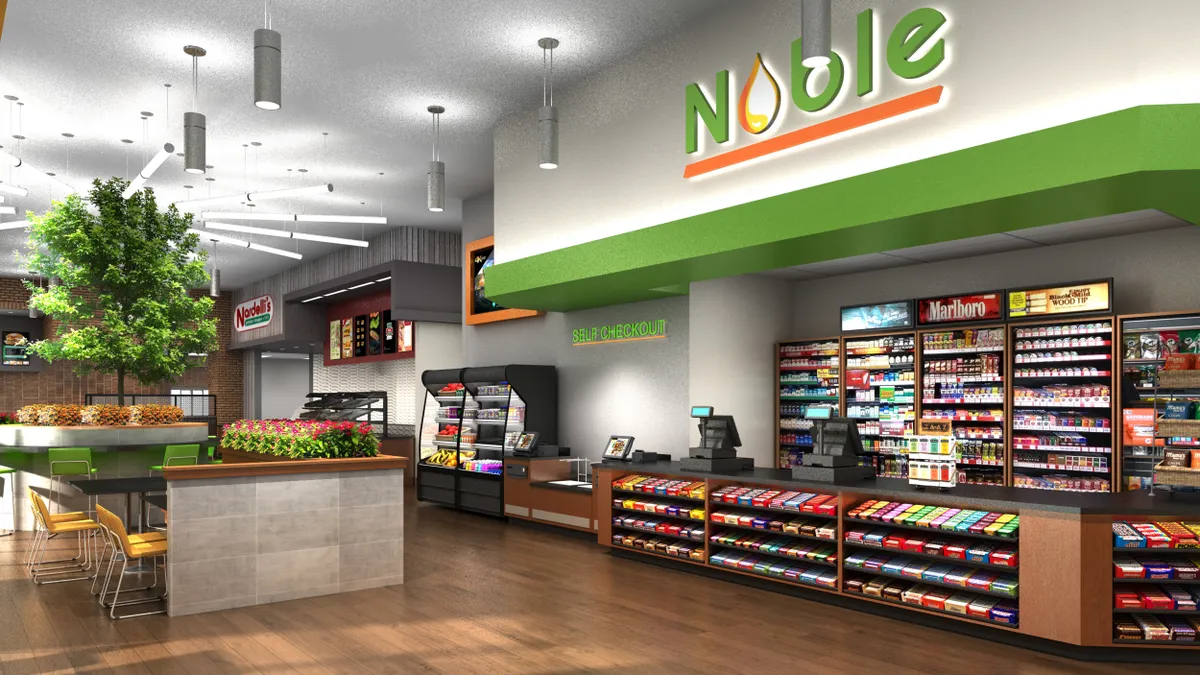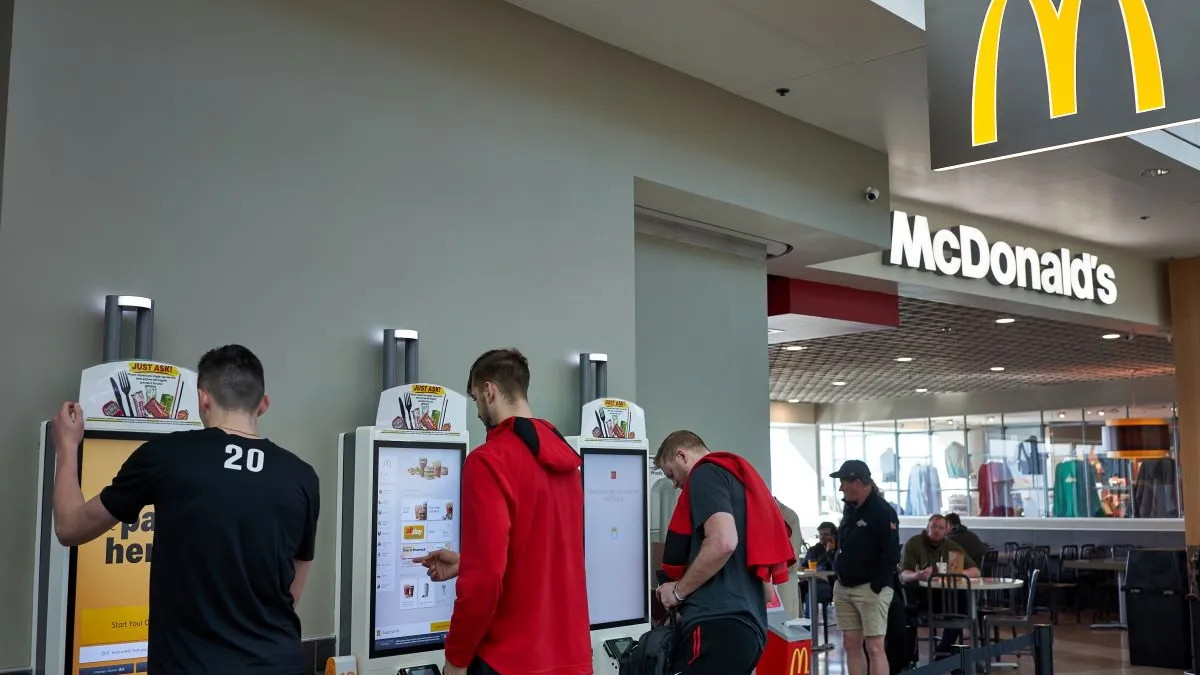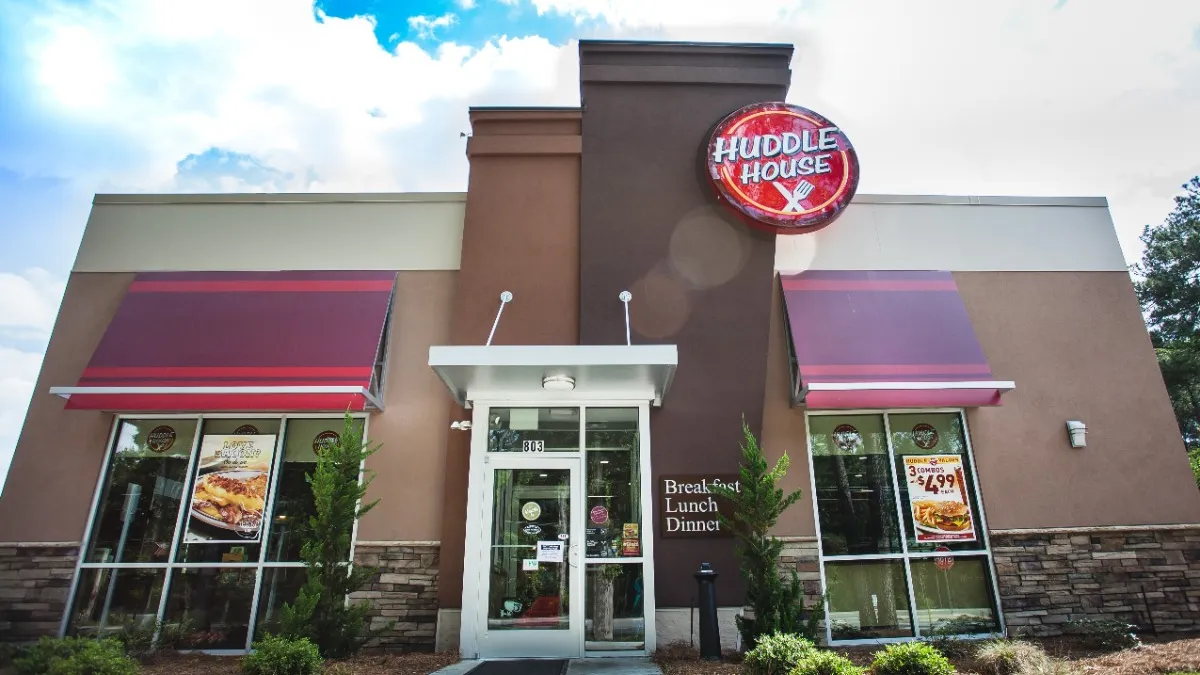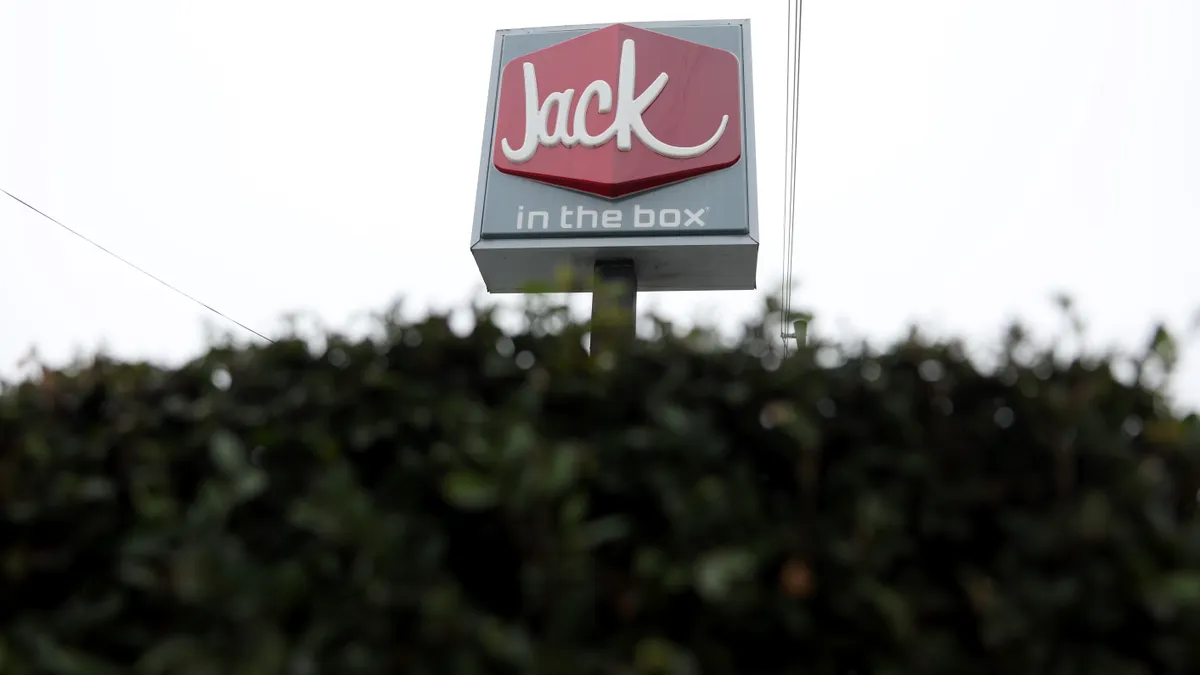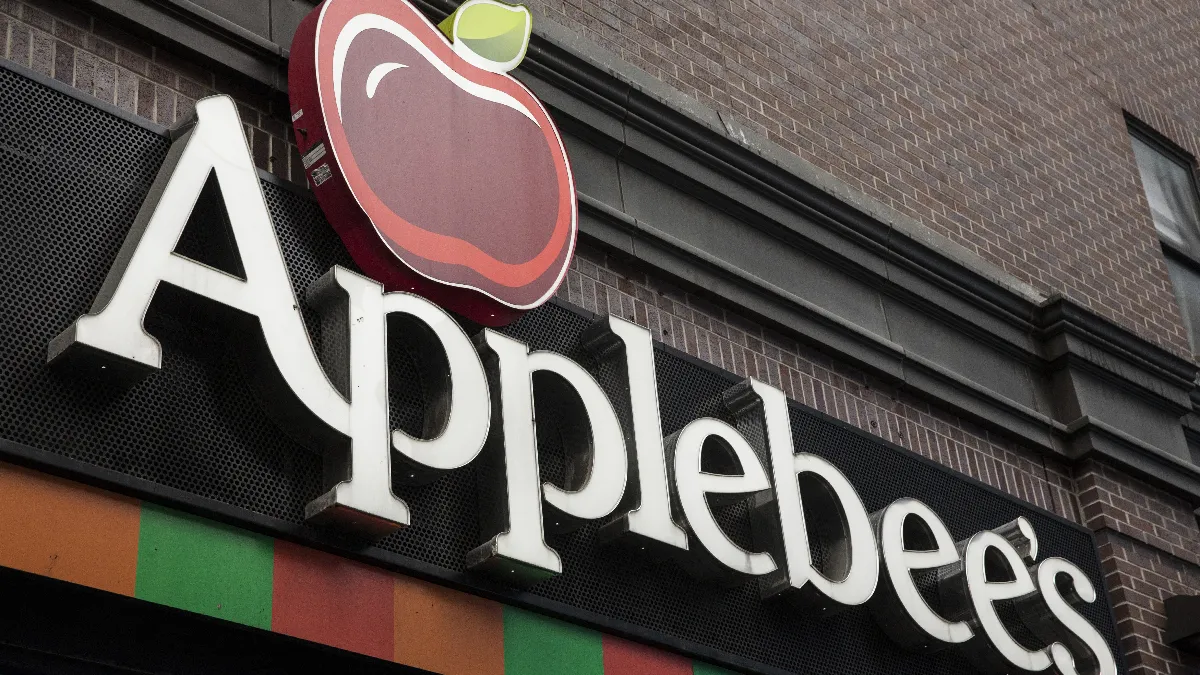When Cousins Subs first added curbside pickup early in the pandemic, it used temporary signs in frames telling guests where to park and relied on customers to call into stores providing a description of their vehicles, Justin McCoy vice president of marketing at Cousins Subs said. But these customers were also using the same phone lines as other guests trying to place orders.
"It isn't the [type of] curbside that we hope to have going forward," McCoy said.
Despite this challenge, curbside performed well and contributed to the company’s same-store sales growth, which has been positive after only four to five weeks of decline at the start of the pandemic, McCoy said. The company has drive-thrus in 30 out of its nearly 100 locations and offers delivery at 85% of its stores.
Cousins Subs has since installed permanent signage attached to galvanized steel poles and is working with Olo, its online ordering vendor, to roll out automated alerts that inform staff once a curbside customer has arrived, McCoy said. Staff use a tablet that also integrates online orders — delivery or curbside — in addition to taking phone orders.
"I think that will improve the experience for the guests, and also improve the operational efficiency for us at the store," McCoy said. "Our viewpoint is to look for as many ways as possible to be able to conduct business with our valued guests in a profitable manner. And curbside will be a piece of that moving forward."
Cousins Subs is one of several chains looking to improve their curbside experience. El Pollo Loco, Panera, Hooters, Teriyaki Madness, Mooyah Burgers Fries & Shakes and Buffalo Wings & Rings are among the restaurants pushing technological advancements, from GPS automation to text-based communication, to make the channel more seamless and efficient.
Curbside's challenges
When Teriyaki Madness rolled out curbside earlier this year, it noticed the issues the service can create, Jodi Boyce, executive vice president of marketing at Teriyaki Madness said.
"With shops that have a good view, we can see [customers] pulling up and we know their car make, model and color so we can look for it, but in a really busy shop or during the dinner or lunch rush, that was the biggest challenge. How do you know when the customer is there?" Boyce said.
Curbside contributed to a 17% increase in sales year-over-year as of early September, along with delivery and online ordering, Boyce said, adding that it also saves costs because customers don't have to pay delivery fees and shop owners can avoid commissions like with third-party delivery, Boyce said.
"Anything that has to do with convenience is going to stick around," Boyce said. "But if it's a little clunky and if that person has to wait or they try to call the shop and they're not answering or whatever it is, that’s a terrible experience. And we want to give them a really good experience."
To make that experience smoother, Teriyaki Madness originally tested two different geofencing technologies to track the customer, but soon found that the alert systems weren't disruptive enough with everything going on in-store to get a staff member’s attention, Boyce said.
Missing an alert increases wait times, which could, in turn, decrease customer retention. Four out of 10 customers believe waiting longer than four minutes for curbside pickup at a fast food restaurant is too long, while 83% feel frustrated waiting 10 minutes or more, according to Bluedot's second The State of What Feeds Us report. The survey, conducted by SeeLevel HX between June 23 to July 2 among 1,501 U.S. residents, showed consumers are increasingly using curbside pickup, with 62% choosing that option over the previous month. Respondents also perceived curbside pickup as the second safest option after drive-thru.
If it takes 10 minutes for a customer to receive an order upon arrival because staff can't find the right car or there is a long line of cars waiting, food goes cold, Tasso Roumeliotis, co-founder and CEO of Numa, said. Numa is a technology company specializing in automated messaging systems and currently works with independent restaurants, including Arthur Mac's Tap & Snacks, Waterman's Surfside Grille, Augie's Montreal Deli and CDs Wings.
"The way it has been done has been very ad hoc and put together with duct tape," Roumeliotis said. "That is not a functional approach."
Numa's goal is to use its automated messaging and artificial intelligence technology to manage curbside better and reduce curbside delivery time to under two minutes, Roumeliotis said. Using its system, staff that need to know about the order can access the information from a tablet to control and automate the process, such as telling customers where to park.
How to solve the curbside calling problem
Teriyaki Madness is working with Olo and Punchh to take a similar approach, allowing customers to notify a restaurant of their arrival with a click of a button on their phone. Once the process is fully integrated in a month or so, the alerts will come through the POS system, Boyce said.
"As long as we make that a really smooth process for the customer, I think more and more people will do it," Boyce said.
Mooyah Burgers, Fries & Shakes also pushed out curbside pickup at the start of the pandemic, which was nearly a year before it had originally planned, Mooyah President Tony Darden said. It set up the option on its app, which also features its loyalty program, to coincide with takeout and delivery.
"But it wasn't what you would call a world-class curbside program, [and] not one that we envisioned when we were going to roll it out in 2021," Darden said.
The next step of that program would be to have geofencing capabilities so that staff would automatically know when a guest arrives, without having customers to call in, Darden said. That feature could be added as early as the Q1 2021, he said.
Several startups and companies are creating technologies to help push curbside forward. Woolpert, an architecture, engineering, geospatial and strategic consulting firm, launched its GeoAwareness product in August, which allows staff to see a customer's real-time location to help business prioritize and prepare orders and reduce wait times. When a customer is within two minutes of a store, staff receive an alert and can then deliver upon the guest’s arrival, according to a press release. FlyBuy Pickup, which partnered with Hooters in September, offers a similar service allowing restaurants to meet customers at the curb as soon as they pull up.
Other technologies that could be developed include a geofencing that uses a customer's credentials — or "curbside identity" that includes information about the customer's vehicle that they can turn on and off — so businesses know when they enter the parking lot, Roumeliotis said. Startup Citrus launched a similar platform in September that provides estimated arrival times for customers and provides retailers with license plates and information for easy identification. DoorDash added customer tracking capabilities in May allowing restaurants or merchants to be informed when a customer is arriving to pick up their order.
Technologies like Numa's also have fixed fees compared to third-party delivery platforms that charge per transaction, which makes this off-premise channel more affordable for operators to use, Roumeliotis said. Restaurants can also have a more direct relationship with customers with curbside and can communicate with them either through an automated system or directly to solve a problem instead of going through a third-party delivery provider, Roumeliotis said.
"We think people opening up restaurants would much rather mitigate toward curbside and takeout or where the economics are more appealing to them," Roumeliotis said.
QR codes are increasingly popular tools
During the pandemic, Flame Broiler, a 180-unit rice bowl concept in California, Arizona, Florida, Nevada and Oklahoma, installed drive-up virtual kiosks that allow customers to order using their phones from their cars in a restaurant parking lot. By scanning a QR code posted outside, guests can view the menu and pay virtually, Daniel Lee, head of brand and technology at Flame Broiler, said.
"Our customer's safety is our biggest priority, and we want customers to feel safe while getting food from us," Lee said. "It was a novel way in which we used technology, and Flame Broiler is excited in its potential."
The company tested the QR codes in corporate-owned stores, making sure the process was easy for customers and that orders were sent correctly to the kitchen. Following a successful trial week, franchise locations began to implement the virtual kiosks, Lee said.
The QR codes have been available since April and the restaurant has had mixed reviews, which Lee attributes mostly to an unfamiliarity of how the technology works. Certain areas have seen more adoption than others, but Lee said he was unsure of the reason as these locations didn't have any commonalities.
If Flame Broiler were to do this again, it would likely relaunch with more resources behind the initiative and make it mandatory across its system. It would also make sure to implement single sign-on, which allows users to securely access multiple applications by logging in only once, to allow a seamless experience across its various technologies, Lee said.
"The QR codes have opened our eyes to the other ways customers want to be able to order their food, especially in light of the pandemic," Lee said. "If you think about it, the difference between ordering [by] your phone via a QR code and a physical kiosk is just the device you're using – people are familiar with their own devices."
Using this method can remove a large capital expense on installing traditional self-service kiosks and results in more flexibility in placing QR codes around the physical store, he said.
"Contactless interactions between restaurants and diners will be further normalized as we increasingly see larger brands adopt this order method, and technology is the greatest facilitator to ensure personless business," Lee said. "Technology will continue to grow by allowing people to place their orders on their phone, track the progress of their meal and get notified when their meal is prepared. Who knows, maybe restaurants will begin to use automation to deliver the meals to cars waiting at the curbside pickup."
The long-term impacts of curbside
At Toppers Pizza, sales were down 15% to 20% in the first couple weeks of the pandemic, but sales increased to 20% to 30% on a weekly basis by May, CEO Scott Gittrich said. What helped was Toppers Pizza was already ahead of the industry using technology to stay in line with the rest of the pizza segment. It offered in-app ordering years before McDonald's ever did, for example, Gittrich said.
Within three to four weeks of the pandemic, the company rolled out curbside delivery, notifying staff of a customer's arrival and which curbside parking spot they were located, Gittrich said. Tablets were installed in restaurants for staff to text customers, Gittrich said. By mid-May, curbside made up over 40% of its total sales, he said.
"There is no way this goes away," he said. "It changes how we do business."
The addition of curbside, for example, may alter its footprint where future buildings could be 25% to 30% smaller, he said.
Buffalo Wings & Rings, a casual sports bar concept that has been offering traditional curbside pickup through the pandemic, will test a valet pickup concept in its new Milford, Ohio, location that combines a digital element to the pickup process, Diane Matheson, vice president of marketing at Buffalo Wings & Rings, said.
The design features a portico and once a customer drives through it, staff will receive a notification, Matheson said.
"Everything is kept in the digital channel. You don't have to pick up a phone and call anybody. You just push a button and all your information is transferred over to us," Matheson said.
The company will take learnings from this location and use it to launch a lot of the digital pieces to other stores pretty quickly, while the automated digital piece will solve issues related to staff not picking up the phone, Matheson said. Customers could also send messages to the restaurant, such as a compliment or complaint through a mobile device.
Along with valet pickup, the restaurant will test different ways to bring added hospitality to the off-premise experience, which could be providing dog treats if a customer has a dog waiting with them or a lollipop for a kid or a bib for a baby, Matheson said. Adding these little touches could personalize the visit, especially as diner habits continue to shift toward off-premise.
"It takes six weeks to form a new habit. We've been in this for awhile and I think consumer behavior has shifted and they are now considering casual dining as more of a to-go option," Matheson said.



